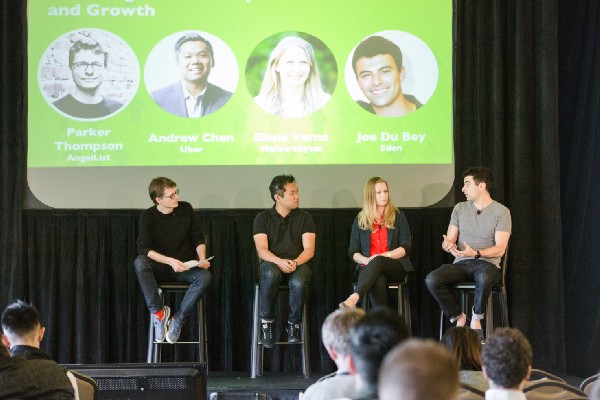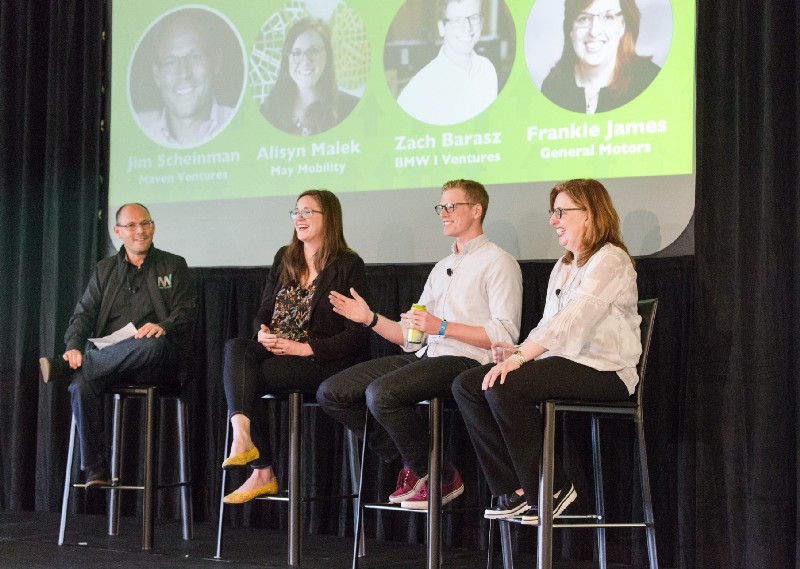We hosted Maven Ventures’ 2nd annual Hypergrowth Retreat last month to connect early stage founders from our portfolio and community to the top growth practitioners in Silicon Valley. After a full day of content, workshops, and one on one sessions, we were blown away by the positive feedback we got from our attendees. Here’s one attendee’s review:
“Gaining insights and valuable lessons from some of the most experienced leaders in growth helped us upgrade our pre-launch strategy, and better understand what it takes to build a scaleable product and business.” -Jon Shooshani, Avo
Based on this feedback, we wanted to share some highlights from the sessions to help other early stage founders stay informed on how the top experts are thinking about growth today. These insights just scratch the surface. If topics like these are relevant to your business, consider joining us at next year’s retreat.
In his talk, “The Only Metric that Matters,” Josh Elman (Greylock) suggested that once a startup begins to track user data, there is one metric that is of utmost importance: how many times are users performing the core action on the expected cycle? For example, after charting user behavior at Twitter, Josh realized that the people who tweeted twice within 7 days in a given month had a very high likelihood of coming back the next month. So, that became their north star metric.

Andrew Chen (Uber), Elena Verna (Malwarebytes) and Joe Du Bey (Eden) discussed with Parker Thompson (AngelList) “Balancing Your Startup’s Monetization and Growth.” Elena shared the importance of getting Malwarebytes customers to the “aha moment,” the point at which they realized they should pay for the product. For her company, an anti-malware software, the “aha moment” comes when a potential customer downloads the product, because it’s at that point that their system can be scanned and malware discovered. Joe said that investors are sensitive to unit economics but growth is always the north star. By Series A, though, investors start to inquire more about the economics, Joe noted. Andrew added that getting addicted to paid acquisition early on can be a problem down the road; build an organic growth system, leveraging the unique value propositions of your product to ignite virality.

Cat Lee was the first head of growth and now runs culture at Pinterest. She discussed “How a Company-Wide Growth Mindset Built Pinterest” at the Retreat. Aspirational cultures are fine, but company cultures that come with real, actionable values translate to the most success. For example, Pinterest has the company value “Put Pinners First” that can be referenced in any decision a team member faces. This means that all product features are built with the goal of giving pinners the most delightful experience possible. Also, growth is not something that only the growth team should get credit for — the entire company is responsible for growing the product. As Cat put it, “One team, one dream.”
Darius Contractor (Dropbox), Dan Barak (Lyft), and Nick Soman had a conversation about “Growth Hacking the Conversion Funnel.” Nick said that you don’t have a conversion funnel if people aren’t getting to value, similar to getting to the “aha moment” Elena described. Dan added, users won’t get to the moment of value if there is a broken layer on the funnel — identify where people are dropping off and mend the hole. Darius mentioned the importance of building a dashboard that can be easily queried for the effects of certain actions so that you can implement an analytical, number driven approach to growth.


In his presentation “Beyond Product-Market Fit,” Brian Balfour encouraged attendees to not think of market, business model, product and channel as different silos. Lay out a hypothesis on how a new product or feature will fit into the entire framework of the market it’s addressing, the channel it will grow on, and the acquisition model it’s based on. Then, test the hypothesis. Diligently tiering your products and ensuring they have all of these fits will lead to a high revenue, successful business, Brian said.

Building on Cat and Eric’s talks describing growth as more than numerical analysis, but also emotional connection and care, Dave Kashen (Fearless Ventures) explained how to “Make Your Company Culture Your Secret to Success.” Companies that have strong company cultures, data shows, outperform those that don’t. While many leaders intend to create the greatest output by creating fear if deadlines are not met, the more effective strategy is to lead with love. “Inspire the why,” Dave said, and your company will be aligned towards achieving the greatest success.

In the panel Jim moderated on how autonomous vehicles are a new platform for consumer Hypergrowth, Alisyn Malek (May Mobility), Zach Barasz (BMW i Ventures), and Frankie James (General Motors) had a consistent message. As Alisyn put it, finding opportunities to find and surprise riders will be the next step in creating value in autonomy. Zach continued saying that Lyft and Uber have commoditized driving and created the infrastructure to get us from A to B. Now, new companies will need to differentiate themselves based on social or other factors, such as how customers are matched in a shared ride. Frankie added that beyond the social components, technical aspects of automotive — like batteries — need to be innovated for full autonomy to become a reality.
Dan Vallejo (Google) taught attendees that the first step to “Maximizing First 72 Retention” is to make setup as short and painless as possible. Then, don’t inundate your new app users with education on how to use the product at the outset. Additionally, use feature retention analysis to determine which features are associated with the most active users, and focus your initial on-boarding on getting users to that action. (Elena and Nick’s “aha moment” principle is coming into play again!)
Gustaf Alströmer (YCombinator) shared his principles of “Laying the Foundation for Sustainable Growth”: build a culture of data and review experiments often. For every experiment a Product Manager runs, he or she should track closely how it performs against a control group to understand what would have happened if that feature wasn’t shipped. At Airbnb where Gustaf led the growth team, they used A/B testing on a systematic level to validate ideas. Using Cat and Dave’s frameworks for infusing this experiment + validation mindset into your company culture can be a recipe for success.

To conclude the Retreat, Sara Deshpande (Maven Ventures) moderated a panel on “Getting Funded by Top-Tier Investors.” Rick Yang (NEA) explained that deploying a $3B fund, as his firm is doing, means being patient and looking for huge opportunities that may take 10+ years to exit. So, he looks for vision and endurance in founders. Mar Hershenon (Pear VC) felt similarly that a startup mission needs to get her team excited about the market opportunity for them to make an investment. Rebecca Kaden (USV) shared that entrepreneurs that can articulately explain how their product and team are uniquely suited to address the market get funded.
Building products and businesses that achieve Hypergrowth is not easy, and these principles are just the starting point. I hope you find these frameworks for thinking about growth useful — and also continue to push the envelope on experimentation, tracking, and instilling strong team cultures to build the next wave of fast-growing, transformative companies.
Thank you to all of our Hypergrowth speakers for sharing their experiences at the Retreat. And, to Benjamin Hoffman for sharing his diligent notes to make this post possible!
Drop us your e-mail to be the first to hear about Hypergrowth Retreat 2018 tickets
